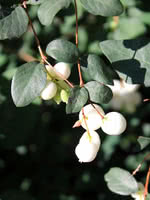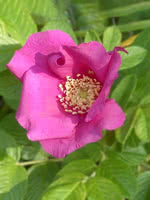Mon-Fri 9am - 5pm Mountain time
Western Snowberry vs Rugosa Rose
Symphoricarpos occidentalis
Rosa rugosa
NOT AVAILABLE THIS SEASON - MIGHT RETURN
NOT AVAILABLE THIS SEASON - MIGHT RETURN
Like the Common Snowberry, the Western Snowberry is a small shrub with pink flowers useful for feeding livestock and preventing erosion. Unlike the common species, however, the Western Snowberry is much more suited to wet conditions, capable of persevering through poor soil drainage and occasional flooding.
After the Snowberry's flowers have bloomed, it produces berries which often last on the plant through winter. These berries are toxic to humans, but livestock and local wildlife love them! Those hoping to attract wildlife to their property can plant Snowberry and expect to see animals foraging on it much later in the year than other plants.
Rugosa Rose is well-known for its incredible cold hardiness and disease resistance. This variety was grown from seed so naturally the flower colour should range between white and red. Try using the rose hips to make syrups or add flavor to existing fruit dishes and drinks.
Due to their overly thorny stems, Rugosa Rose is perfect for creating an impenetrable, deer resistant hedge. We recommend applying mulch during the summer months to retain moisture, cool the roots, and prevent weeds.
Western Snowberry Quick Facts
Rugosa Rose Quick Facts
Toxicity: berries are toxic to humans

